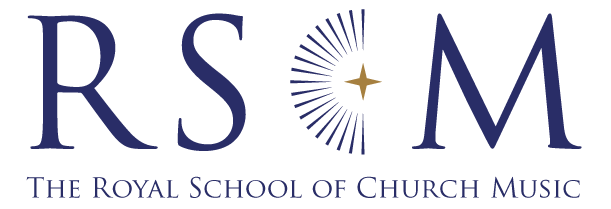Guidance for Churches/Choirs/Singers (Updated 10 July, 8.30am BST)
This information is supplied as what is intended to be a helpful digest of the latest Government advice.
Please refer to the direct web pages quoted below for the full text. Wales, Scotland and Northern Ireland have not as yet issued updated information. The Church of England website currently states: “In light of the Government announcement on singing we are reviewing our guidance”.
From UK Government advice about places of worship:
Singing, chanting and the use of musical instruments / Led devotions
There should be no group singing inside places of worship when worshippers are present.
From 11th July, outside only, small groups of professional singers will be able to sing in front of worshippers. Singing in groups should be limited to professional singers only and should be limited to a small set group of people. Both the singers and the worshippers should be outdoors.
Indoors – where essential to an act of worship, one individual only should be permitted to sing or chant, and the use of plexi-glass screens should be considered to protect worshippers from them, as this will further prevent transmission and the screen can be easily cleaned. Where music plays a big part in worship, and recordings are available, we suggest you consider using these as an alternative to live singing.
You are advised only to play musical instruments that are not blown into. Organs can be played for faith practices, as well as general maintenance, but should be cleaned thoroughly before and after use.
Broadcasting – Groups of professional singers are now able to rehearse and record indoors for broadcast (see the [Department for Digital, Culture, Media & Sport guidance for information on how this can be done safely).
Congregational activity – Except for the limited circumstances outlined above, people should avoid singing, shouting, raising voices and/or playing music at a volume that makes normal conversation difficult or that may encourage shouting. This is because of the potential for increased risk of transmission from aerosol and droplets.
Therefore, spoken responses during worship should also not be in a raised voice.
Activities such as singing, chanting, shouting and/or playing of instruments that are blown into should be specifically avoided in worship or devotions. This is because there is a possible additional risk of transmission in environments where individuals are singing or chanting as a group, and this applies even if social distancing is being observed or face coverings are used.
Performing Arts guidance
https://www.gov.uk/guidance/working-safely-during-coronavirus-covid-19/performing-arts#arts-5-2
This document also contains guidance on managing premises or venues and audiences. As social distancing guidelines and our understanding of higher risk activities such as singing and playing wind and brass instruments evolve, and as the law changes, further versions of this document will be published.
We have developed a five-stage roadmap to bring our performing arts back safely. These five stages of the phased return to performing arts are as follows:
Stage One - Rehearsal and training (no audiences)
Stage Two – Performances for broadcast and recording purposes
Stage Three – Performances outdoors with an audience and pilots for indoor performances with a limited socially-distanced audience
Stage Four – Performances allowed indoors and outdoors (but with a limited socially-distanced audience indoors)
Stage Five – Performances allowed indoors / outdoors (with a fuller audience indoors)
On the date of publication we are at Stages One and Two of this roadmap. This means that we are now supporting musicians, dancers and actors, and the technical and operational teams that support performing arts production, to safely resume training, rehearsals and recorded performances where organisations wish and are able to.
From the 11th July, we will move to Stage Three. This means that performances outdoors with a socially distanced audience can take place in line with this guidance. DCMS will work with sector representative bodies to select a number of pilots for indoor performances with a socially distanced audience. We expect to say more on a possible date for Stage 4 soon and Stage 5 in due course.
This guidance sets out how performing arts organisations can prepare for and deliver their activities at each of these five stages. This means that not all the guidance set out here will be relevant immediately; organisations should adopt the guidelines insofar as the government permits activities to proceed. Where a premises or venue delivers a mix of services, only those services that are permitted to be open should be available.
Professionals working in the performing arts are permitted to return to their activities in line with this guidance.
Non-professionals (meaning those participating in performing arts other than for work purposes), or groups which include non-professionals, may refer to this guidance for their activities, but must at all times do so in line with government legislation and guidance on meeting people outside your household.
Non-professionals should currently not engage in singing or playing wind and brass instruments with other people given these activities pose a potentially higher risk of transmission and whilst research is ongoing. DCMS has commissioned further scientific studies to be carried out to develop robust scientific data for these activities. Existing and emerging evidence will be analysed to assist the development of policy and guidelines.
We expect that this document will be updated over time. This version is up to date as of 9 July 2020. If you have any feedback for us, please email performingartsguidancereview@culture.gov.uk
This guidance applies to those who engage in activities in the performing arts including but not limited to performers (actors, singers, dancers, musicians, other performers), coaches, support workers, choreographers, costume designers, set builders, accompanists, directors, stage managers and other creative, technical and operational production team members; and to the premises and venues in which performing arts activities take place. It applies to training, rehearsal and pre-production activities, and performances which take place with or without a live audience, wherever these activities occur.
This guidance is likely to be relevant and should be considered in a wide range of circumstances including but not limited to: music production, film, advertising, television production, places of worship, outdoor events and festivals, indoor unseated music venues, bars and restaurants. Where relevant, it should be read alongside the specific guidance relevant to particular settings. In particular, learning professionals in the performing arts should look at guidance for schools and out-of-school settings.
This guidance should be read in conjunction with the latest UK Government guidance. It will be updated regularly as Government advice changes, so please ensure you are working from the latest version.
The evidence supporting a move from one phase to the next will be considered separately for singing, and for wind and brass. As a result the move from one phase to the next may not be the same for wind and brass as it is for singing. Phases may also include different approaches for different environments where ventilation, screening and other options can be demonstrated to reduce risk.
Where the social distancing guidelines cannot be followed in full in relation to a particular activity, organisations should consider whether that activity needs to continue, and, if so, take all the mitigating actions possible to reduce the risk of transmission between staff, workers, participants and audiences. Mitigating actions include:
Further increasing the frequency of hand washing and surface cleaning.
Keeping the activity time involved as short as possible.
Using back-to-back or side-to-side positioning (rather than face-to-face) whenever possible.
Reducing the number of people each person has contact with by considering the use of ‘fixed teams, groups or partnering’ (so each person works with only a few others).
Grouping individuals into fixed teams that work together throughout a production or project or for specific periods to minimise the risk of transmission beyond these fixed teams
Note that it is unlikely that this fixed team approach will be possible in non-professional environments or where professional performers work with more than one group or organisation simultaneously
Objective: To minimise the risk of transmission whilst singing and playing wind or brass instruments.
This is the initial phase of the recommended guidance. Further guidance will be issued when there is sufficient scientific evidence to support a move.
- Singing and playing wind and brass instruments, especially in groups, are considered higher risk activities because of the potential for aerosol production and the absence presently of developed scientific analysis to assess this specific risk. The evidence is being developed rapidly. This Section sets out the additional risk mitigation appropriate to the initial phase of returning to singing and playing wind and brass instruments.
Singing
- For singers working with other individuals, positioning side-to-side or back-to-back and avoiding singing face-to-face even when following the required distance.
- When essential, if it is not possible to maintain recommended extended social distancing whilst singing, using one or multiple fixed teams to manage risk of transmission and considering.
- Within the fixed team, positioning side-to-side or back-to-back and avoiding singing face-to-face wherever possible.
- Observing extended social distancing (current guidance is that if the activity is face-to-face and without mitigations, 3 metres is appropriate) between the fixed team and any other people such as conductors, other musicians, audiences or accompanists wherever possible.
- All members of a fixed team self-isolating if one member displays symptoms of COVID-19, which again reiterates the need to keep fixed teams as small as possible.
- It is unlikely that this fixed team approach will be possible where professional performers work with more than one group or organisation simultaneously.
- Making sure that no singers are participating if suffering with symptoms of COVID-19 or when advised to self-isolate.
Results of further research conducted will lead to updates in this guidance.

